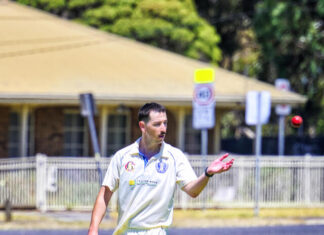We are fortunate to have many beautiful beaches around Geelong and the Bellarine, but it’s important to remember we share them with native wildlife.
One of our most vulnerable beach residents is the endangered hooded plover, a small bird with black, white and brownish-grey feathers and distinctive red rings around its eyes.
From August to April, hooded plovers, affectionately known as ‘hoodies’, nest along the surf beaches of the Bellarine Peninsula, including at Thirteenth Beach, Breamlea Estuary and Ramblers Road Foreshore, Portarlington.
An adult pair of hooded plovers will lay up to three eggs in scrapes in the sand and incubate them for four weeks until they hatch.
Once the chicks hatch, they must forage for their own food along the shoreline until they are able to fly, sometimes travelling up to two kilometres in search of food.
With only 12 breeding pairs on the Bellarine, their future survival depends on the mindfulness of the community.
Hooded plovers face many threats, especially from human activity, so it’s essential we’re mindful of our beach behaviour.
People and dogs pose significant risks to Hoodies as their eggs are small and well camouflaged, making it easy for them to be accidentally crushed.
To help protect these birds, seasonal adjustments have been put in place such as ‘dog on-leash’ zones near nesting sites, temporary fencing, educational signage and wooden teepees for chicks.
There are some simple things you can do to help preserve our beach-nesting birds:
Walk along the water’s edge.
Adhere to hooded plover nesting signs.
Give breeding pairs and their nests plenty of space.
Check and comply with dog regulation signs.
Put your dog on a leash on dog-friendly beaches when near signed or fenced breeding sites.
For more information, visit geelongaustralia.com.au/hoodedplover
Hooded plovers are often confused with the spur-winged plover, also known as the masked lapwing. Unlike the hooded plover, the spur-winged plover has yellow facial markings and is known to swoop.
Swooping season is here now and is expected to continue until mid-November.
Swooping birds, such as spur-winged plovers and magpies, are found in both rural and urban areas and swoop to protect their eggs and young.
You can reduce your risk of being swooped by avoiding nesting areas when possible.
If you find yourself in a swooping area, protect your head and eyes and move quickly through the area, but don’t run.
While swooping birds can be frightening, it is uncommon, with less than 10 per cent of magpies engaging in this behaviour.
Please remember that native birds are protected by law, so do not try to scare them or approach their nests.
For more information on swooping birds and to see swooping hotspots, visit wildlife.vic.gov.au/managing-wildlife/swooping-birds







